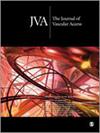在多学科协作模式下处理 PICC 破裂:病例报告。
IF 1.6
3区 医学
Q3 PERIPHERAL VASCULAR DISEASE
Journal of Vascular Access
Pub Date : 2025-05-01
Epub Date: 2024-05-27
DOI:10.1177/11297298241254564
引用次数: 0
摘要
外周置入中心导管(PICC)通常用于为患者输液。然而,导管破裂是与置入 PICC 相关的最严重并发症之一。我们对一名 81 岁的患者进行了调查,该患者在置入 PICC 近 11 个月后发生导管破裂,随后在导管捕获过程中发生导管破裂,在使用捕获器进入上腔静脉后将导管取出。该病例表明,硅酮基 PICC 很脆弱,自发脱位的风险很高。因此,应将其更换为聚氨酯 PICC。本文章由计算机程序翻译,如有差异,请以英文原文为准。
Management of PICC rupture in a multidisciplinary collaborative model: A case report.
A peripherally inserted central catheter (PICC) is commonly used for fluid infusion in patients. However, rupture is one of the most serious complications associated with PICC placement. We investigated an 81-year-old patient who experienced a catheter break nearly 11 months after the placement of PICC, followed by a catheter break during catheter capture that was removed after accessing the superior vena cava with a catcher. This case suggests that silicone-based PICCs are fragile and have a high risk of spontaneous dislocation. Therefore, they should be replaced with polyurethane-based PICCs.
求助全文
通过发布文献求助,成功后即可免费获取论文全文。
去求助
来源期刊

Journal of Vascular Access
医学-外周血管病
CiteScore
3.40
自引率
31.60%
发文量
181
审稿时长
6-12 weeks
期刊介绍:
The Journal of Vascular Access (JVA) is issued six times per year; it considers the publication of original manuscripts dealing with clinical and laboratory investigations in the fast growing field of vascular access. In addition reviews, case reports and clinical trials are welcome, as well as papers dedicated to more practical aspects covering new devices and techniques.
All contributions, coming from all over the world, undergo the peer-review process.
The Journal of Vascular Access is divided into independent sections, each led by Editors of the highest scientific level:
• Dialysis
• Oncology
• Interventional radiology
• Nutrition
• Nursing
• Intensive care
Correspondence related to published papers is also welcome.
 求助内容:
求助内容: 应助结果提醒方式:
应助结果提醒方式:


